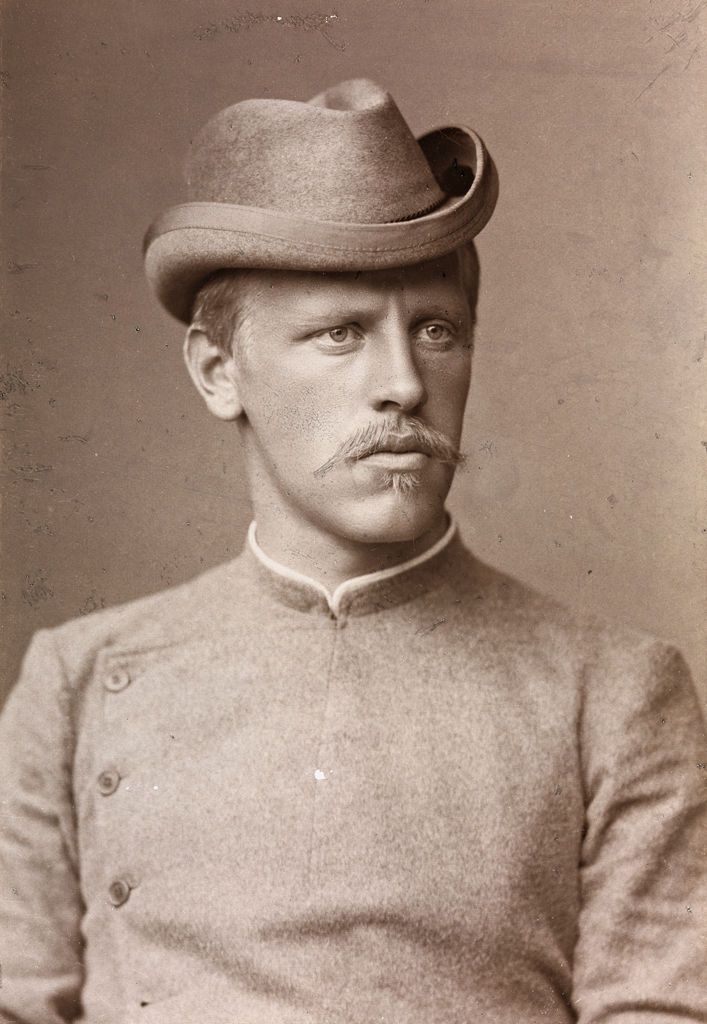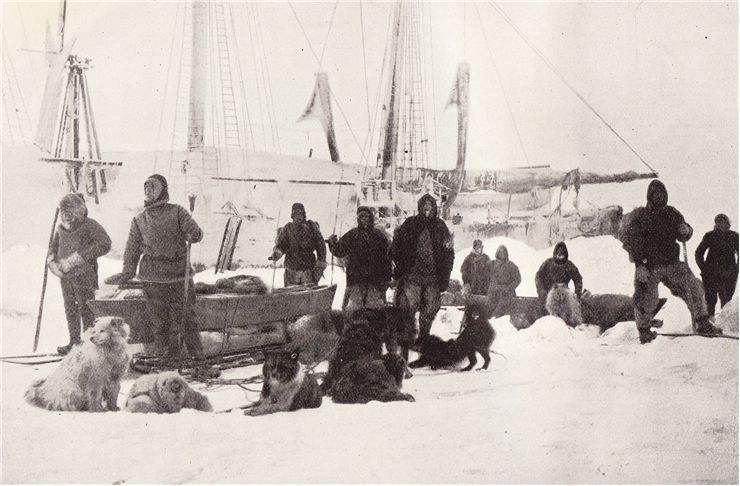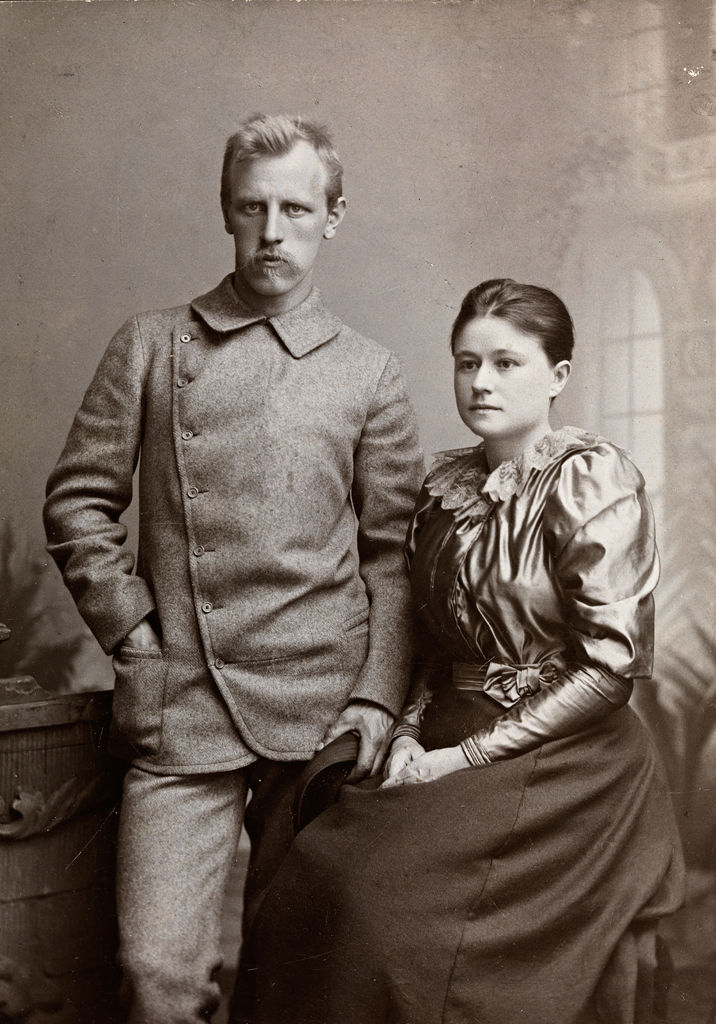Fridtjof Nansen - North Pole Expedition
Fridtjof Nansen (1861 - 1930) is today remembered as one of the most famous polar explorers from Norway and a gifted scientist, diplomat, and humanitarian. During later stages of his life he became heavily invested with League of Nations, where he worked with refugees all around the world, eventually being awarded with Nobel Peace Prize for his work on behalf displaced victims of World War I.
Nansen was born on 10 October 1861 in Store Frøen, Christiania, Norway as a first son of a prominent layer Baldur Fridtjof Nansen, and his second wife Adelaide Wedel-Jarlsberg. Ever from his young age he had an affinity to a nature and life in the frozen wilderness. He started practicing skiing and skating at the age of two, and during his school years he showcased remarkable affinity toward these two sports. At the age of 18 he broke the world one-mile skating record and won the national cross-country skiing championship for 12 times in a row. During all those times he also practiced survival skills in the wilderness, becoming ever more self-reliant.
The first chance of polar exploration came during his student years, after he joined the Royal Frederick University in 1881 where he studied zoology. In early 1882 he jumped to a chance to firsthand explore Polar Regions, and during the five months between March and August he took several scientific studies of polar environment and life. It was during that journey near a coast of Greenland that he came to an idea of land expedition, with possible goal of crossing of its interior. However, upon returning he stopped his studies at the university and spent next six years as a curator in the zoological department of the Bergen Museum.
It was in early 1887 that Nansen finally started organizing his mission for exploration of Greenland. Two previous missions of Adolf Erik Nordenskiöld and Robert Peary both managed to penetrate some 100 miles into Greenland icecap before returning to the resupply base, but Nansen did not want to do the same. He devised a plan of landing on the desolate eastern shore of Greenland, and traveling through the middle of that large island toward the populated areas on the western shore. This plan therefore forced Nansen and his crew never to give up from their proposed journey, because the only salvation from hunger and salvation would be in front of them. They had to move forward, or they would die. Because Nansen planned to carry on this mission with only 6 people, and carrying specially made snow sleds, majority of the scientific community dismissed his mission as non-professional.
After fighting severe cold conditions near the coast of eastern Greenland, they finally reached Umivik Fjord, and prepared for the start of the journey. On 15 August 1888 they started their trek over the ice, eventually coming to conclusion that cannot reach originally planned destination of Christianhaab fast enough to get boarded on ships that would be awaiting them. Instead of that, they set their sights on much closer Godthaab and continued they journey towards it through treacherous terrain and harsh weather. After 49 days of walking they finally reached their goal, where they remained for the next seven months awaiting the ship that would carry them home.
Glory that awaited Nansen in his homeland did not changed his resolve to explore much farther to the north. He spent more than 3 years preparing for the journey and constructing new ship “Fram” (Forward) that was supposed survive harsh weather and iced seas. In June 1893 his expedition went toward the north and then eastward near the coast of Siberia. Their travel ended on September 20th when ice finally captured them, enabling the ship and their crew to fulfill the main task of this journey – slow drift with the ice across the north. Three years crew remained marooned in this endlessly moving ice environment, battling the harsh conditions, isolation, and off course boredom. In the early 1895 movement of ice came to an end, and to energize the crew, Nansen decided to preform land based dash toward the North Pole. Between March14th and April7th Nansen and his partner Hjalmar Johansen traveled to the north, until they finally stopped in front of very hard icy terrain. There on 86°13.6′N spot (3 degrees more than previous “farther north” record), they finally decided to head back. Sadly their trip home was full of hardships, but eventually they managed to reach Norway on 9 September where they were welcomed as national heroes.
Today, exploits of Fridtjof Nansen remain well remembered for his courage, ingenuity and survival tactics that enabled many other polar explorers to discovers unexplored lands and finally reach North and South Pole. He died on 13 May 1930, and was buried with state honors.
| Name | Fridtjof Nansen |
| Born | 10 October 1861 |
| Place of Birth | Store Frøen, Christiania (now called Oslo), Norway |
| Died | 13 May 1930 |
| Place of Death | Polhøgda, Lysaker, Norway |
| Category (Occupation/Profession) | Scientist, explorer, humanitarian |
| Nationality | Norwegian |
| Education | The Royal Frederick University |
| Known For | Nobel Peace Prize laureate |
| Famous Expedition(s) | First crossing of the Greenland interior |
| Spouse(s) | Eva Sars, Sigrun Munthe |
| Parent(s) | Baldur Nansen, Adelaide (née Wedel-Jarlsberg) Nansen |
| Awards | Nobel Peace Prize (1922), Kongelige Norske St. Olavs Orden, Order of the Dannebrog, National Order of the Legion of Honor, Order of St. Stanislaus Cullum, Geographical Medal (1897), Vega Medal (1889) |
| Monuments | Yerevan |



